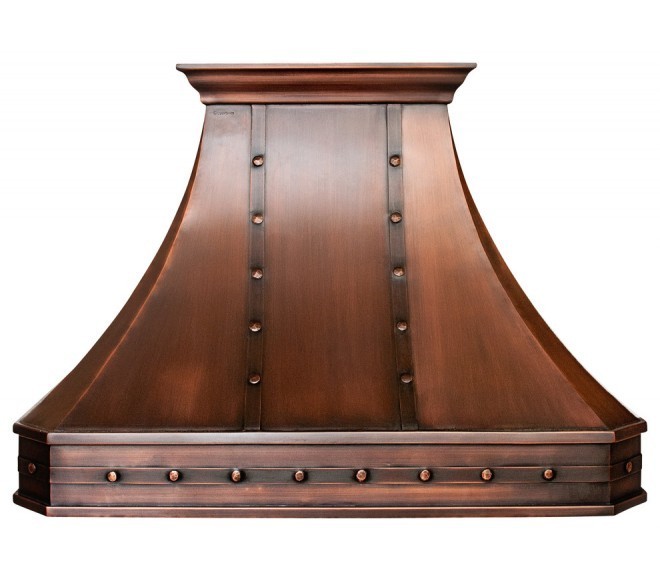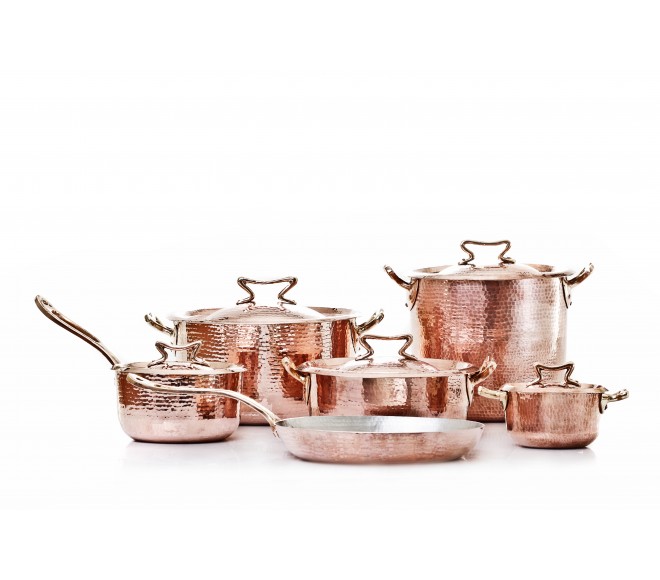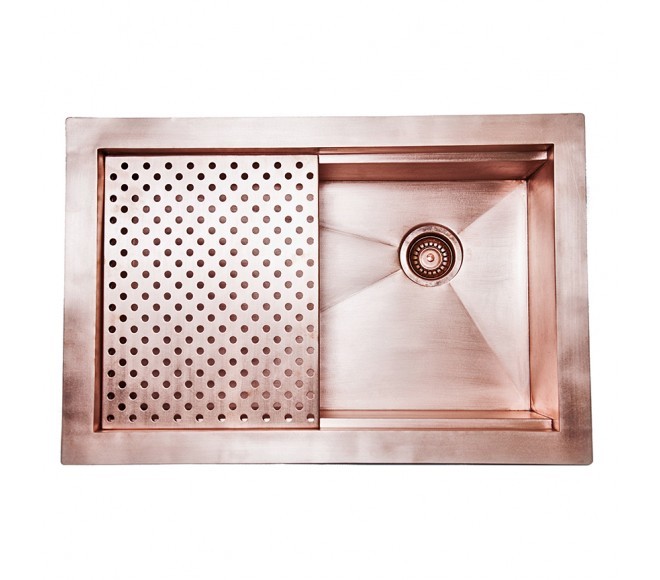You're not looking for simple ways to manage your kitchen design; you're looking for awesome ways! CopperSmith is here to assist you with helpful kitchen design advice. Read on for three ways you can work copper into your kitchen design.
Range hoods in a minimalist design
Many people today favor the minimalist approach to kitchen design. All white ceilings, walls, and floors -- combined with sleek furniture lines in contrasting monochrome -- cry out for an interesting counterpoint. Copper is the answer. The soft metal brings light into dark spaces and warmth into sterile, cool color schemes. Choose from several copper finishes: burnished, hammered, oxidized, or polished. Combine a copper range hood with weathered brick back splashes or contemporary counters. Copper is versatile and lets you stretch your imagination.
Copper range hoods are a great way to add that splash of warmth in a contemporary copper kitchen design; yet copper range hoods are efficient and functional, not merely decorative. They consist of the hood, the switch, the fan that draws smoke, grease, and odors up into a filtered panel, and sometimes a light to illuminate the stovetop. Ranges come in ducted and non-ducted styles. The ducted styles draw the unwanted combustion byproducts outside the home, away from the chef and the other residents, while non-ducted styles recirculate the filtered exhaust.
Copper range hoods are easy to clean like all natural copper products. Their surfaces are naturally anti-bacterial which is a plus when working above cooking areas. A soft cloth and gentle dish soap make cleaning a snap. No harsh chemicals to burn your skin or make breathing difficult. In fact, harsh cleaners will scratch and mar the copper finish so stay away from them. The traditional copper cleaning method involves a cut lemon, salt, and a soft touch as you clean.
Copper cookware is both functional and decorative
Copper cookware is the choice of great chefs, a standard that has stood the test of time for centuries. Copper heats evenly and helps prevent scalding and scorching. Copper pots are not for cooking at high temperatures. Chefs cook at lower temperatures which means the food cooks gently, retains more flavor, and moisture. It's such a great heat conductor, there often is no need to preheat copper pots and pans. Copper is safe to cook in as long as it has another metal as a liner. The most common liners are nickel, tin, or stainless steel. In addition, there are some copper pots that do not need liners for safety. These are pots for whipping egg whites and jam/jelly pots. The reactive qualities in copper stabilize the protein in egg the whites and provide extra accuracy in texture of preserves and in jam and jelly reduction.
Copper pots are not the kind you hide in closets. They bring light into the room and function as a decorative accent to traditional and contemporary copper kitchen designs. Hanging on the wall above the stove, copper pots provide warmth and interest to otherwise cold and boring walls. The more distressed they are, the more interesting counterpoint they provide to bare walls. Copper pots and pans usually come in very shiny surfaces but after years of use they develop a patina and dents and dings that give them character. If the loss of shine bothers you, you can use a non-abrasive copper cleaner and a soft cloth to bring back the shine. You can also wet a cloth with white vinegar and gently rub the outside of the pot. After the vinegar does its work, rinse the pot carefully to remove all traces of the vinegar and dry it well. Since copper reacts to acidic liquids, the vinegar takes the dark spots out. Tomato paste or ketchup will do the work as well; do not leave on too long and rinse thoroughly. With proper care, your copper pots and pans will last forever.
Copper sinks are back in vogue
You will have a one-of-a-kind product if you choose a copper sink for your remodel. Artisans create copper sinks from a single sheet of copper. That means you can see the hammered imprints and, like fingerprints, there are no two identical hammered sinks. The hammered finish also hides the dents and scratches that come with age and high use. One of the most common copper sinks is the farmhouse style, deep and undivided, like this polished copper farmhouse apron sink. The farmhouse sink fits in with any rustic style copper kitchen design. You can find over mounts and under mounts. Whatever style you choose, the sink is likely to form the focal point of your kitchen. Copper is low maintenance, lasts a long time, and installation is easy. We make our copper sinks to fit into your existing countertop. Copper does not rust.
Copper sinks develop a patina with age which many people think adds to the natural beauty over time. The patina is nature's way of protecting the soft metal from degradation. You will want to watch the thickness of copper used to create your sink. Copper is a soft metal, easily malleable, so the thickness affects how well the metal will age. The thicker the guage, the lower the number, and you will appreciate the value as the product ages. A 16 guage copper is a good thickness. Thinner guages make the metal sound like tin when the water hits the sink bottom. Not a pleasant sound and an indication that the product won't wear as well as a lower guage. Copper's anti-bacterial property makes it perfect for a kitchen sink because it slows down micro-organism growth and retards food borne illnesses.
For more kitchen design advice, or anything else, please contact us. We are your resource for all questions about copper products.



